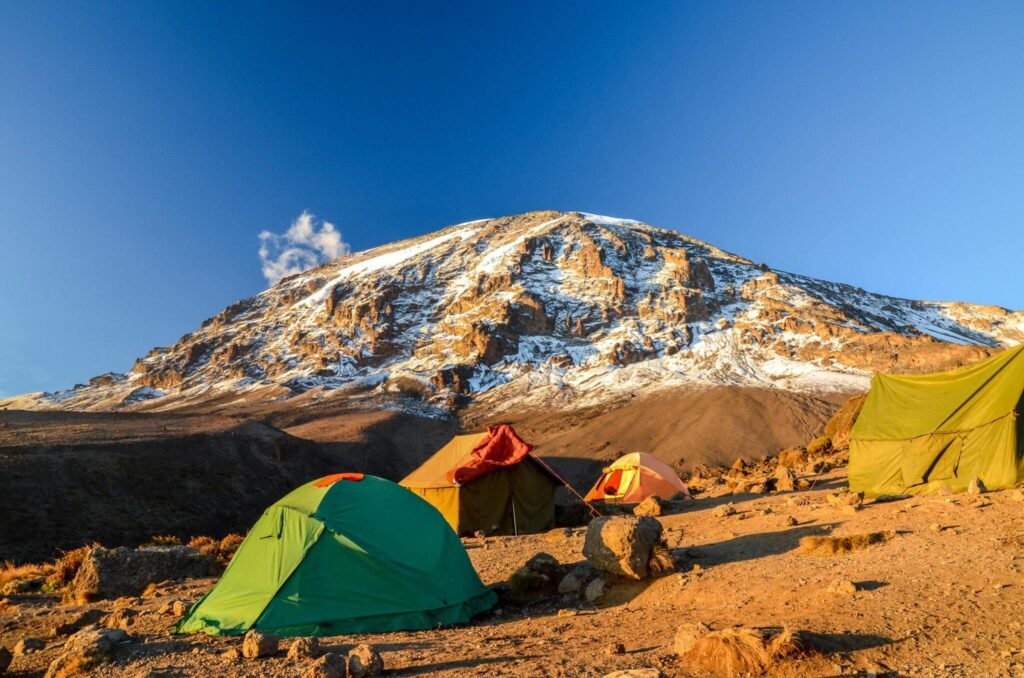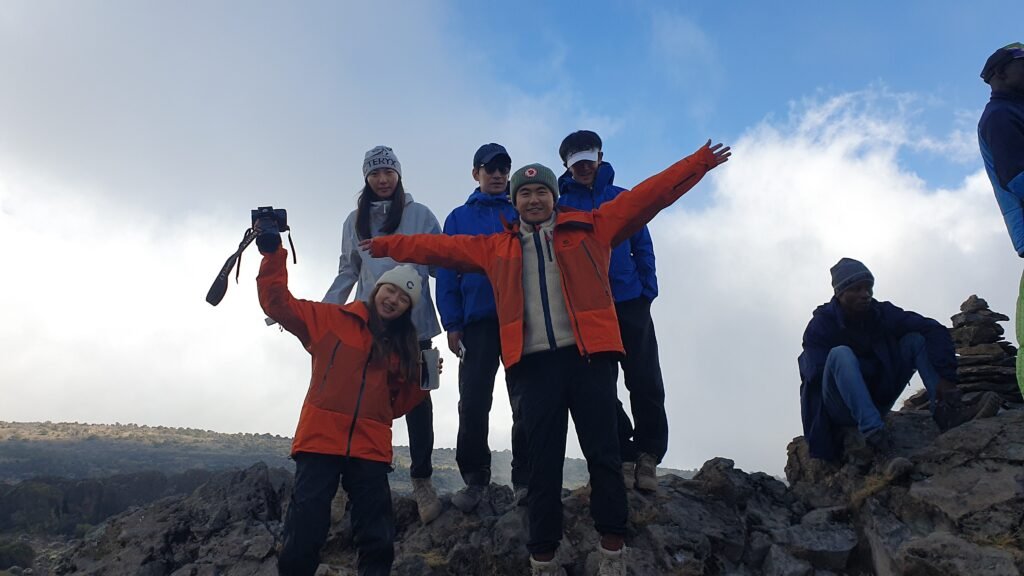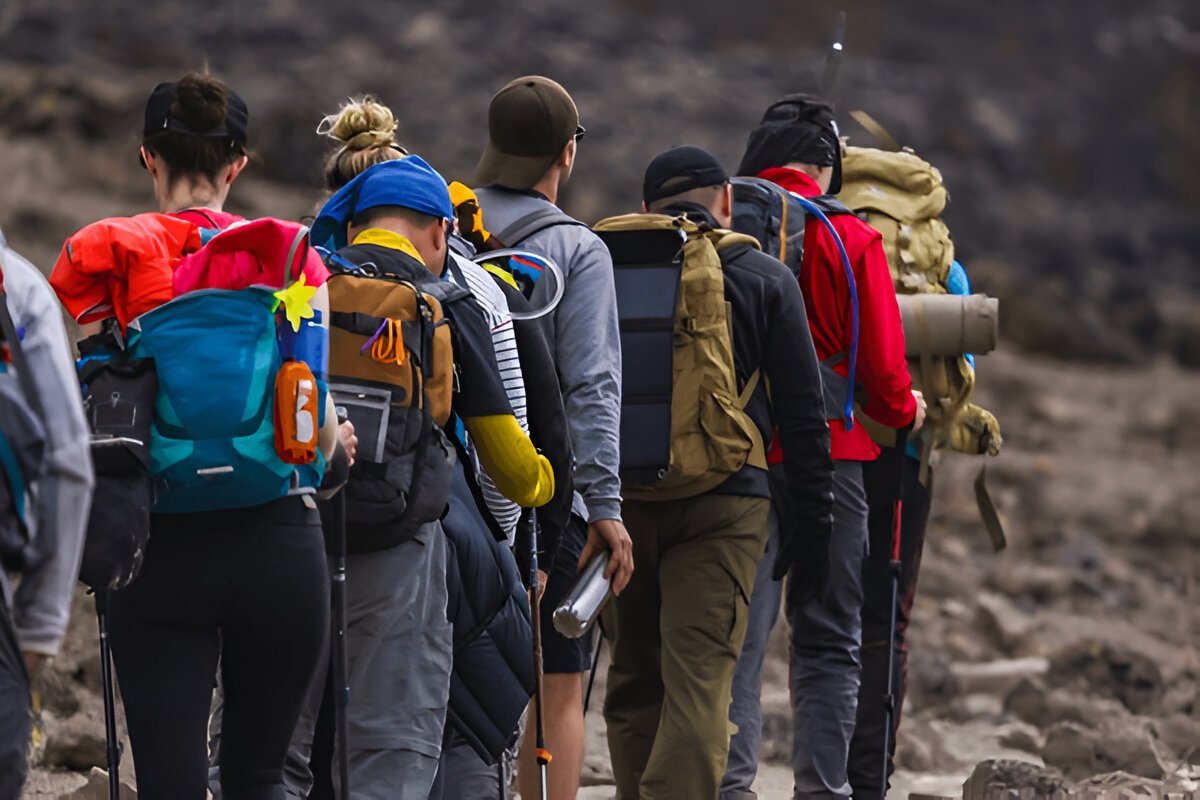Kilimanjaro climbing and hiking adventure in 2024, offering climbers the chance to conquer Africa’s highest peak at 5,895 meters (19,341 feet). The mountain has various routes suited to a range of fitness and experience levels, each offering its unique landscapes, challenges, and acclimatization profiles. A Kilimanjaro climb is an unforgettable journey through five climate zones, from lush rainforests to arctic-like conditions near the summit.

Highlights of a Kilimanjaro Adventure in 2024
Diverse Routes: Options range from scenic, gradual climbs like the Lemosho and Machame routes to more challenging, direct paths like Umbwe.
Varied Terrain: Climbers encounter diverse ecosystems, including tropical rainforest, heath and moorland, alpine desert, and icy summit.
Experienced Guides and Porters: Certified guides and porters lead each expedition, providing support, insights, and safety measures.
Flexible Duration: Climbs range from 5-9 days, allowing flexibility in acclimatization schedules for a higher summit success rate.
Popular Kilimanjaro Routes in 2024

Machame Route (6-7 Days)
Difficulty: Moderate to challenging
Scenery: Known for beautiful landscapes and high summit success rates due to gradual acclimatization.
Highlights: The “Whiskey Route” features lush rainforests, Shira Plateau, Lava Tower, and Barranco Wall.
Best For: Those looking for a scenic route with manageable acclimatization over 7 days.
Lemosho Route (7-8 Days)
Difficulty: Moderate, with a longer approach for gradual acclimatization
Scenery: Lemosho offers some of the best views, with a start through remote rainforests and crossing into the Shira Plateau.
Highlights: Less crowded, with stunning vistas from day one and a great acclimatization profile.
Best For: Hikers wanting a scenic, quieter route with high success rates over an extended period.
Marangu Route (5-6 Days)
Difficulty: Moderate; more direct route
Accommodation: Only route with permanent huts instead of camping
Highlights: Known as the “Coca-Cola Route,” this route is the most accessible and features gradual ascents. However, fewer acclimatization days mean lower summit success rates.
Best For: Those who prefer hut accommodations and a shorter trek, though less acclimatization time.
Rongai Route (6-7 Days)
Difficulty: Moderate
Scenery: Starts from the northern side, near the Kenyan border, with drier landscapes and different wildlife sightings.
Highlights: Offers a quieter experience with beautiful views of Mawenzi, one of Kilimanjaro’s three main peaks.
Best For: Climbers seeking a less crowded route with unique views and moderate terrain.
Umbwe Route (5-6 Days)
Difficulty: Challenging, due to steep ascents and limited acclimatization time
Scenery: The route is direct and steep, with rewarding views for experienced climbers.
Highlights: Begins with a quick ascent, offering direct paths and spectacular views, though acclimatization can be challenging.
Best For: Seasoned hikers looking for an intense, shorter trek with fewer crowds.
A Typical Day on Kilimanjaro
Each day starts early, with breakfast prepared by the cook team, and then follows with a steady, manageable pace for acclimatization. Climbers hike for 4-8 hours daily, with ample breaks and a warm lunch along the trail or at the next camp. The evenings are spent at camp, where trekkers rest, enjoy hearty dinners, and prepare for the following day.

Accommodations on the Mountain for Kilimanjaro climbing and hiking adventure in 2024.
Camping: Most routes are camping-only, with quality tents, dining tents, and portable toilets provided by tour operators.
Hut Accommodations: The Marangu Route offers basic dormitory-style huts with bunk beds, shared facilities, and communal dining areas.
Safety and Acclimatization
Altitude sickness is the primary challenge on Kilimanjaro, so experienced guides and companies prioritize a “pole pole” (slow) pace, ensuring climbers adjust to the altitude. Guides and staff are trained in first aid and carry oxygen tanks, pulse oximeters, and communication devices for emergencies. Routes like Lemosho and Machame, with longer itineraries, are preferred for better acclimatization and summit success.
Best Time to Climb in 2024
The best months are January to mid-March and June to October, when the weather is typically dry and visibility is clear. The rainy seasons, from April to early June and November, are less ideal for climbing.
Preparing for Your Kilimanjaro Adventure
Training: Physical preparation includes endurance training, hiking, and cardio exercises to increase fitness levels.
Gear: Essential items include a four-season sleeping bag, insulated layers, gloves, trekking poles, and durable hiking boots. Most trekking companies provide tents, sleeping pads, and other basic equipment.
Vaccinations and Health Precautions: Tanzanian authorities may require vaccinations, including yellow fever for some travelers. Malaria prevention and altitude medication (e.g., Diamox) are recommended.
What to Expect After the Climb
Upon a successful summit, climbers receive certificates at Mweka or Marangu Gate, marking their achievement. Many adventurers continue to explore Tanzania with optional safari add-ons or beach relaxation in Zanzibar.
packages available to help facilitate your journey.

Conque the Roof of Africa Mt. Kilimanjaro climbing
Kilimanjaro is the highest peak in Africa Standing at 5,895 meters (19,341 feet), located in Tanzania, and
there are several routes to the summit,
each offering unique landscapes and experiences. When looking for climbing packages, it’s essential to consider factors such as route, duration, level of difficulty, amenities, and the expertise of Kilimanjaro Climbing Specialist.
